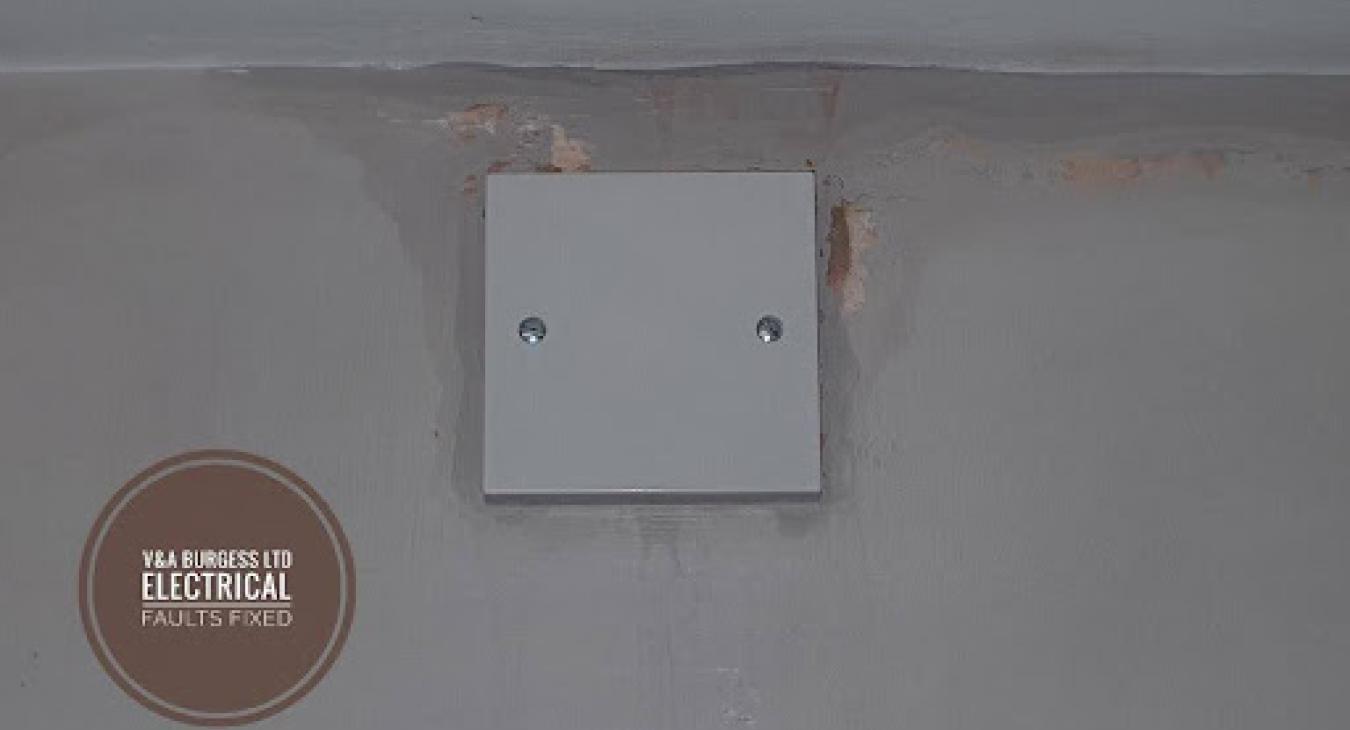
Table of Contents
- What is an electrical blanking plate?
- Why would I have an electric blanking plate in my house?
- How does a blanking plate work?
- What is the point of a blank wall plate?
- Can I cover an outlet with a blank wall plate?
- Can you paint over a blanking plate?
- What’s behind a blanking plate?
- What else are blank plates used for?
- Where can I buy blanking plates?
- Can I get matching blank plates to go with sockets?
1) What is an electrical blanking plate?
An electrical blanking plate is a relatively or completely flat square or rectangular plate that covers up unwanted electrical wiring or connections whilst making them safe and preventing access to live parts. The blanking plate comes in a few different thicknesses and finishes to allow blending with any home décor or existing electrical accessories that you may have installed in your home.
Back to top2) Why would I have an electric blanking plate in my house?
If you have a pre-existing electrical blanking plate in your home, the purpose of which you are unsure of, then it is likely that some electrical work was carried out prior to your home purchase. The best way of ascertaining the purpose of an electrical blanking plate is to contact an electrician to come and investigate this for you. An electrician should be able to trace the wiring for you and establish where it comes from and if it is possible to reinstate the outlet for you.
Back to top3) How does a blanking plate work?
When wiring is no longer wanted in a certain electrical accessory or the need has arisen to remove the electrical accessory from service within the electrical installation, the blanking plate is used as a temporary or permanent measure in order to protect any wiring whilst preventing accidental access to potentially live cables. The blanking plate generally forms a tight seal around its edges and the wall or other surface that it is installed. It is held in place with two electrical machine screws of varying length and 3.5 mm in diameter.
Back to top4) What is the point of a blank wall plate?
One of the advantages of a blanking wall plate is that there still remains access to the wiring behind. This is useful as in many cases, there may be some maintenance that is required in the future. Installing a blank plate may also afford the opportunity to reinstate the electrical point back to a switch or plug socket when required. Installing a blank plate is preferable to simply covering wires and filling the void with plaster. This can lead to danger in some instances and before any decision is made to contain wiring, an electrician should be contacted to establish if there are any safety implications in doing so.
Back to top5) Can I cover an outlet with a blank wall plate?
In many cases it is possible to cover an outlet with a blanking plate. Care should be taken to ensure that any circuit continuity is not broken, connections are tight and secure and that there are no cross connections or short circuit issues in doing so. With any electrical work we always recommend that a professional carry out the work to the required standard in your country. In the UK this is BS7671 which outlines that requirements for electrical installations including and work that is carried out on connections and circuits. You should check the local building and wiring regulations for your territory and ensure that they are followed, this is best done by consulting a professional to ensure that work is done safely.
Back to top6) Can you paint over a blanking plate?
Blanking plates often distract from the home décor and in many cases will be brilliant white which sticks out like a sore thumb! The good news is that it is possible to paint over a blanking plate. This type of work around electrical accessories and wiring should be carried out with the utmost care and safety considerations in mind as wet paint and electrical systems DO NOT MIX. The manufacturer of the electrical blanking plate would always be the best place to start to ascertain if they recommend any pre-treatment to the blanking plate before painting over. Typically, most plastic blanking plates are very smooth which is generally not a great surface for paint to stick to. Some blanking plates will need ‘keying’ before paint will adhere correctly and permanently to them. As a minimum, a primer should be used for the base coat before applying the top coat of paint to a blanking plate. This will ensure that any top coat is more likely to adhere correctly and give you the finish you want. It’s important to remember to turn off the entire electrical supply whilst this kind of work is carried out to minimise the risk of electric shock or other electrical problems. Consider whether it’s best to contact an electrician to ascertain the reason for the blank plate, whether the connections will need to be accessed in the future and if the blanking plate can be removed all together and the void filled safely. Finally, when beginning to paint the blanking plate it may be best to ease off the screws holding it in place and masking around it. This will ensure that you paint the plate and not the surrounding surfaces as well. Whilst the colour may match and it will look okay, the finish is likely to be better painting the blank plate separately to the wall and this also ensure that the blank plate does not become glued to the wall with paint making later removal difficult.
Back to top7) What’s behind a blanking plate?
We can see in this instance that there is wiring installed behind the blanking plate. The reason for this blanking plate being installed in the first place was water ingress into the electrical system. There had been a leak from the bathroom above which had dripped through the ceiling and into the kitchen then into this electrical point in the photograph. This had caused the electrics to trip and introduced danger into the electrical system. The fused spur switch was removed from the wall as it was soaking wet! The cables were made safe ensuring that the continuity of the circuit was kept intact and then the cables were tucked inside the box and the blanking plate installed to protect them and people from each other. An emergency plumber was called to fix the leak then the electrics were tested by an electrician and a fused spur switch reinstalled when safe to do so.
Back to top8) What else are blank plates used for?
Sometimes an electrical blanking plate is not necessarily for covering old or disused electrical wires. There are instances where disused television points and data point need to be covered, this can be more for aesthetic reasons than safety reasons. A blank plate, whilst sometimes ugly, can be less ugly than a galvanised metal or plastic box showing in the wall. Blank plates are also installed when there is an intended use for the outlet point but it has not yet been put into service. Electricians will sometimes install a blank plate before returning to finish off any other work such as after plasterers have visited to skim the walls or ceilings.
Back to top9) Where can I buy blanking plates?
It is best to buy electrical accessories from recognised online or physical retailers. Blanking plates are inexpensive in general so there is little need to shop around for the absolute cheapest price. White blanking plates are typically £1 or less in most retailers and can be purchased in many different stores.
I have included a couple of links to places that sell these:
https://www.toolstation.com/axiom-blank-plate/p35507
https://www.screwfix.com/p/1-gang-blanking-plate-white/4104d
Back to top10) Can I get matching blank plates to go with sockets?
If your sockets are a special kind of finish then you may wish to obtain matching blank plates for these. Many electricians will be able to tell from a photo which brand and style of blank plate will be needed for your home electrics. This does of course depend on the quality of the photograph that you send to your electrician! In some cases, it may be necessary for your electrician to visit you, turn off your power and check the blanking plate for manufacturers details to ensure that an accurate replacement is obtained to match your existing switches and sockets. Blank plates with decorative finishes are likely to cost significantly more than simple white blanking plates so it’s worth asking what the likely cost would be to replace the item for you.
📞 01925 595 980 (Warrington)
📞 0151 351 4011 (Liverpool)
📧 Enquire online
💻 Visit our website
Back to top










